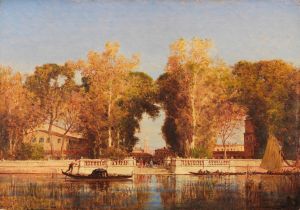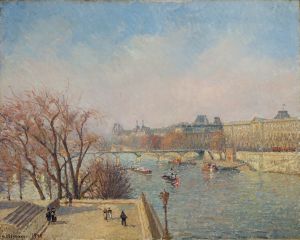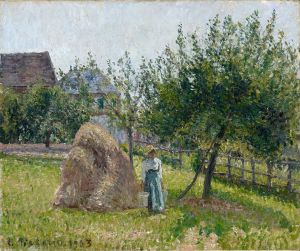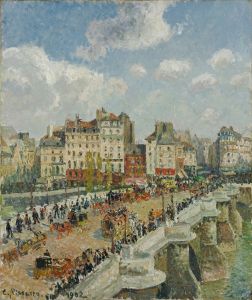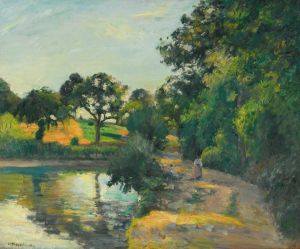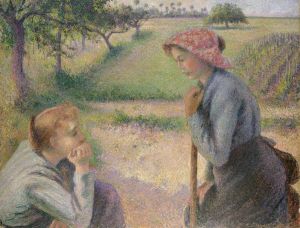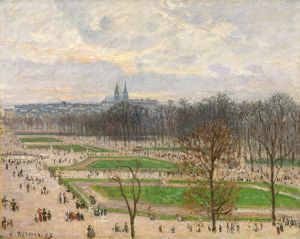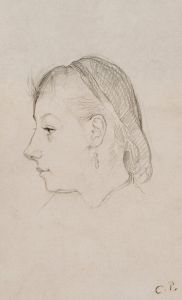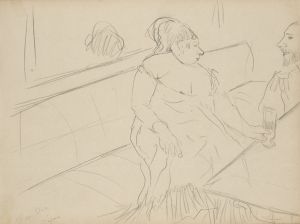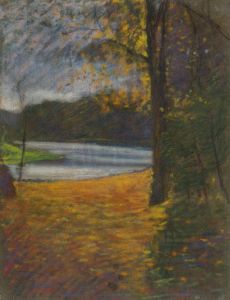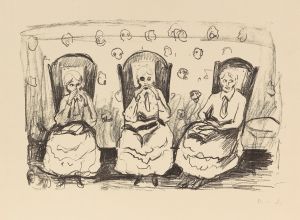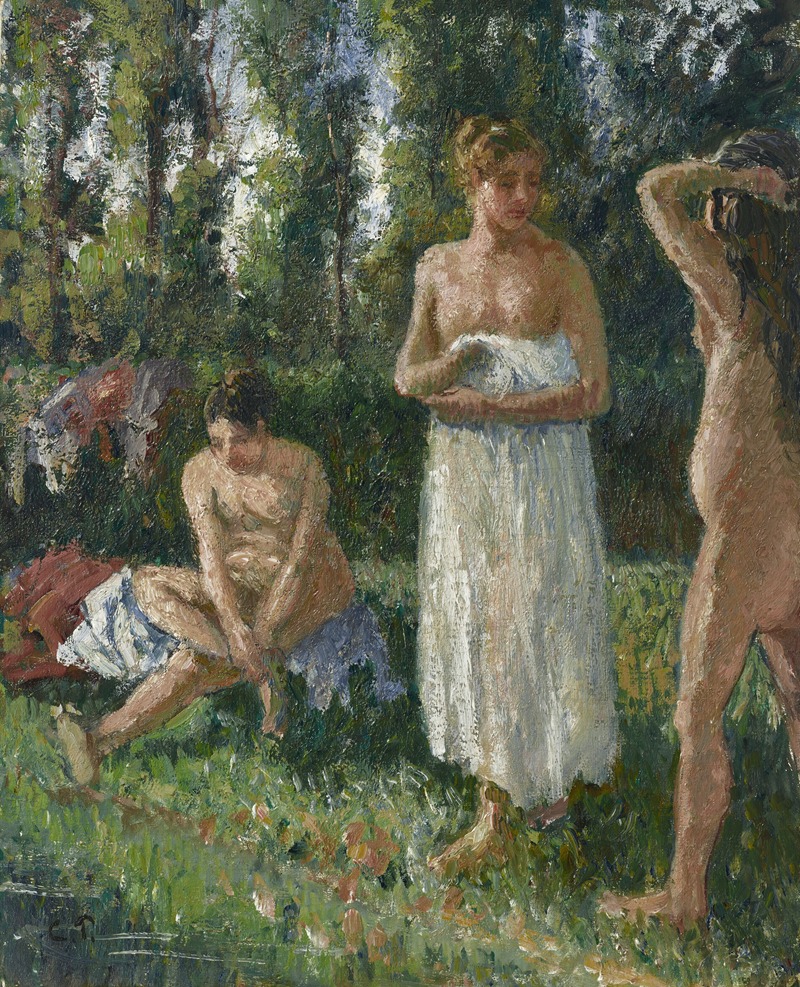
Baigneuses
A hand-painted replica of Camille Pissarro’s masterpiece Baigneuses, meticulously crafted by professional artists to capture the true essence of the original. Each piece is created with museum-quality canvas and rare mineral pigments, carefully painted by experienced artists with delicate brushstrokes and rich, layered colors to perfectly recreate the texture of the original artwork. Unlike machine-printed reproductions, this hand-painted version brings the painting to life, infused with the artist’s emotions and skill in every stroke. Whether for personal collection or home decoration, it instantly elevates the artistic atmosphere of any space.
Camille Pissarro, a pivotal figure in the Impressionist movement, created the painting "Baigneuses" (Bathers) in 1894. Pissarro, known for his landscapes and rural scenes, often depicted the everyday life of peasants and the natural world. "Baigneuses" is a testament to his ability to capture the serene and intimate moments of life, focusing on the theme of women bathing in a natural setting.
The painting reflects Pissarro's interest in the human figure and his exploration of light and color, which are hallmarks of the Impressionist style. In "Baigneuses," Pissarro employs a soft palette and loose brushwork to convey the gentle interaction between the figures and their environment. The composition is characterized by its harmonious balance, with the figures integrated into the landscape, suggesting a unity between humanity and nature.
Pissarro's approach to this subject matter was influenced by his desire to depict scenes of everyday life with authenticity and sensitivity. Unlike some of his contemporaries who often romanticized such scenes, Pissarro's work is noted for its realism and attention to detail. This painting, like many of his works, reflects his commitment to portraying the dignity and simplicity of rural life.
"Baigneuses" also demonstrates Pissarro's skill in capturing the effects of light on the landscape and figures. The dappled sunlight filtering through the trees creates a dynamic interplay of light and shadow, adding depth and movement to the scene. This technique highlights Pissarro's mastery of Impressionist principles, particularly his focus on the transient effects of light and atmosphere.
Throughout his career, Pissarro was known for his collaborative spirit and his role as a mentor to other Impressionist artists, including Paul Cézanne and Paul Gauguin. His willingness to experiment with different techniques and styles is evident in "Baigneuses," where he combines elements of Impressionism with a more structured composition, perhaps reflecting his later interest in Neo-Impressionism.
The painting is part of a broader tradition of depicting bathers in art, a theme explored by many artists throughout history, including Pissarro's contemporaries such as Edgar Degas and Pierre-Auguste Renoir. However, Pissarro's interpretation is distinct in its focus on the naturalistic portrayal of the figures and their environment, eschewing the idealization often found in similar works.
"Baigneuses" is housed in a private collection, making it less accessible to the public than some of Pissarro's other works. Nonetheless, it remains an important example of his contribution to the Impressionist movement and his exploration of new artistic directions in the late 19th century.
In summary, Camille Pissarro's "Baigneuses" is a significant work that encapsulates the artist's dedication to capturing the beauty and simplicity of rural life through the lens of Impressionism. The painting's emphasis on light, color, and the integration of figures within the landscape exemplifies Pissarro's artistic vision and his influence on the development of modern art.





